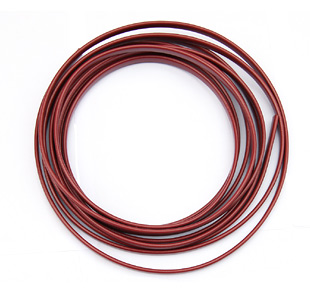Working Principle of Electric Heat Tracing Belt
Electric heat tracing cable is a flat belt cable made up of conductive polymer composites (plastics), two parallel metal wires and insulation sleeves. Characteristics: Conductive polymer composites have positive temperature coefficient (PTC) properties; parallel connection enables self regulation of output power with the changes in the temperature of the heated system. PTC property, also known as positive temperature coefficient effect, refers to the property of electrical resistivity of a material increasing with the rise in temperature, and growing sharply within a certain temperature range. Temperature control heat tracing cable can be shortened arbitrarily or lengthened within limits; even overlapped cables have no high temperature limit and will not be burnt out. Advantages of the temperature control heat tracing cable: self regulation of the output power of the corresponding traced system. Therefore, the product will not be burnt due to self-heating, but compensate the heat according to actual needs. It is a new generation of energy-saving thermostatic heater.
Quick start at low temperature; uniform temperature; automatic regulation according to the changes in the temperature of each traced position
Convenient installation, easy maintenance, high automation level, low operation and maintenance costs; high safety and reliability; wide application range; free from pollution; long service life

|







